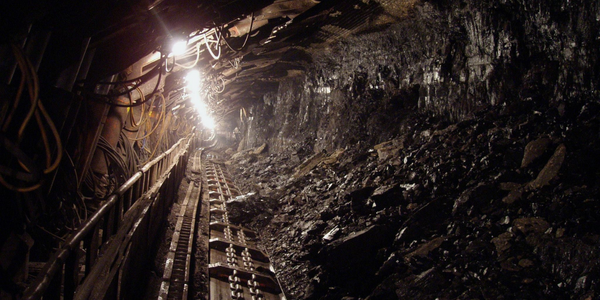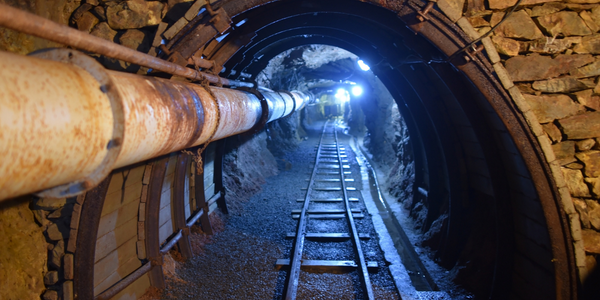
技术
- 分析与建模 - 实时分析
- 应用基础设施与中间件 - 数据可视化
- 功能应用 - 企业资产管理系统 (EAM)
适用行业
- 矿业
适用功能
- 离散制造
用例
- 机器状态监测
客户
紧固件
关于客户
Fastenal 是一家位于明尼苏达州威诺纳的美国工业供应公司。他们为公司提供制造产品、建造结构、保护人员以及维护设施和设备所需的紧固件、工具和用品。
挑战
Fastenal 的目标是更好地了解他们的机器停机时间、利用率、质量问题,并采用尖端的制造技术/流程改进能力,将他们的团队提升到一个新的水平。然而,由于缺乏实时数据、可视化和可操作的洞察力,这一转变不可能实现。
解决方案
MachineMetrics 是解决方案。全自动机器监控和制造分析解决方案提供实时制造生产数据、即时通知以及历史分析的可视化,使工厂工人能够基于实时数据做出更快、更智能、更自信的决策。从整个生产车间的机器控制和机器操作员那里收集数据,然后用于监控机器状况(故障、状态、工具利用率)、生产(OEE 和机器利用率)、工作订单状态、质量跟踪和停机原因自动分类或由操作员通过触摸屏指示。实时仪表板也安装在生产车间,以一目了然地指示工作是否达到或低于预期(相对于零件目标或 OEE 指标)。收集的实时和历史数据使管理人员不仅可以跟踪效率并快速识别与特定加工操作相关的生产瓶颈,还可以帮助他们衡量流程改进的效果。
收集的数据
Asset Status Tracking, Downtime, Fault Detection, Machine Performance, Machine Utilization Rate
运营影响
数量效益

Case Study missing?
Start adding your own!
Register with your work email and create a new case study profile for your business.
相关案例.

Case Study
Underground Mining Safety
The goal was to produce a safety system to monitor and support underground mining operations; existing systems were either too simple (i.e. phone line) or overly complex and expensive, inhibiting deployment, and providing little-to-no support in event of an accident. Given the dangerous nature of the mining work environment and the strict regulations placed on the industry, the solution would have to comply with Mine Safety and Health Administration (MSHA) regulations. Yet the product needed to allow for simple deployment to truly be a groundbreaking solution - increasing miner safety and changing daily operations for the better.

Case Study
Mining Firm Quadruples Production, with Internet of Everything
Dundee Precious Metal’s flagship mine, in Chelopech, Bulgaria, produces a gold, copper, and silver concentrate set a goal to increase production by 30%. Dundee wanted to increase production quality and output without increasing headcount and resources, improve miner safety, and minimize cost.

Case Study
Joy Mining Systems
Joy equipment faces many challenges. The first is machine integration and control. The business end of the machine has a rapidly-spinning cylinder with 6-inch diamond-studded cutting teeth. It chews through rock at rates measured in tens of tons per minute. The system grinds through the rock in front, creating a rectangular mine tunnel. Hydraulic lifters support the ceiling as the machine moves forward. Automated drills and screws drive 3-ft long screws into the ceiling to stabilize it. The rock and coal fall into a set of gathering "fingers" below the cutting cylinder. These fingers scoop up the rock and coal and deposit it onto a conveyor belt. The conveyor passes under the machine and out the back. A train of conveyor belt cars, up to a mile long, follows the cutter into the mine. The rock shoots along this train at over 400 feet per minute until it empties into rail cars at the end. Current systems place an operator cage next to the cutter. Choking dust (potentially explosive), the risk of collapse and the proximity of metal and rock mayhem make the operator cage a hazardous location.

Case Study
Improved Monitoring in Industrial Manufacturing Facility
When your crane is moving tons of magma-hot iron, you can’t afford an unexpected failure. McWane Ductile knew monitoring the crane motor metrics within their facility could help prevent a mechanical failure that would strand an enormous bucket of molten metal overhead. Unfortunately, their legacy wired monitoring system couldn’t work with moving objects in this extreme environment. If they could integrate wireless capabilities into their existing equipment they could extend their monitoring capabilities without starting over from scratch.

Case Study
Novartis Leverages IoT for Enhanced Drug Discovery
Novartis, a global healthcare company, was faced with the challenge of managing and making sense of a vast amount of data. The company had decades of data on how various compounds affect protein targets, with about a billion data points in total. This historical data was critical but sparse compared to the granular data currently being collected. Novartis uses an automated process that captures high-content image data showing how a particular compound has affected an entire cell culture, generating terabytes of phenotypic data. The challenge was to combine this historical data with the burgeoning phenotypic data and place it within the larger context of ongoing medical research from around the world. The team also wanted to combine its data with medical information from NIH’s PubMed, which contains about 25 million abstracts from some 5,600 scientific journals.








